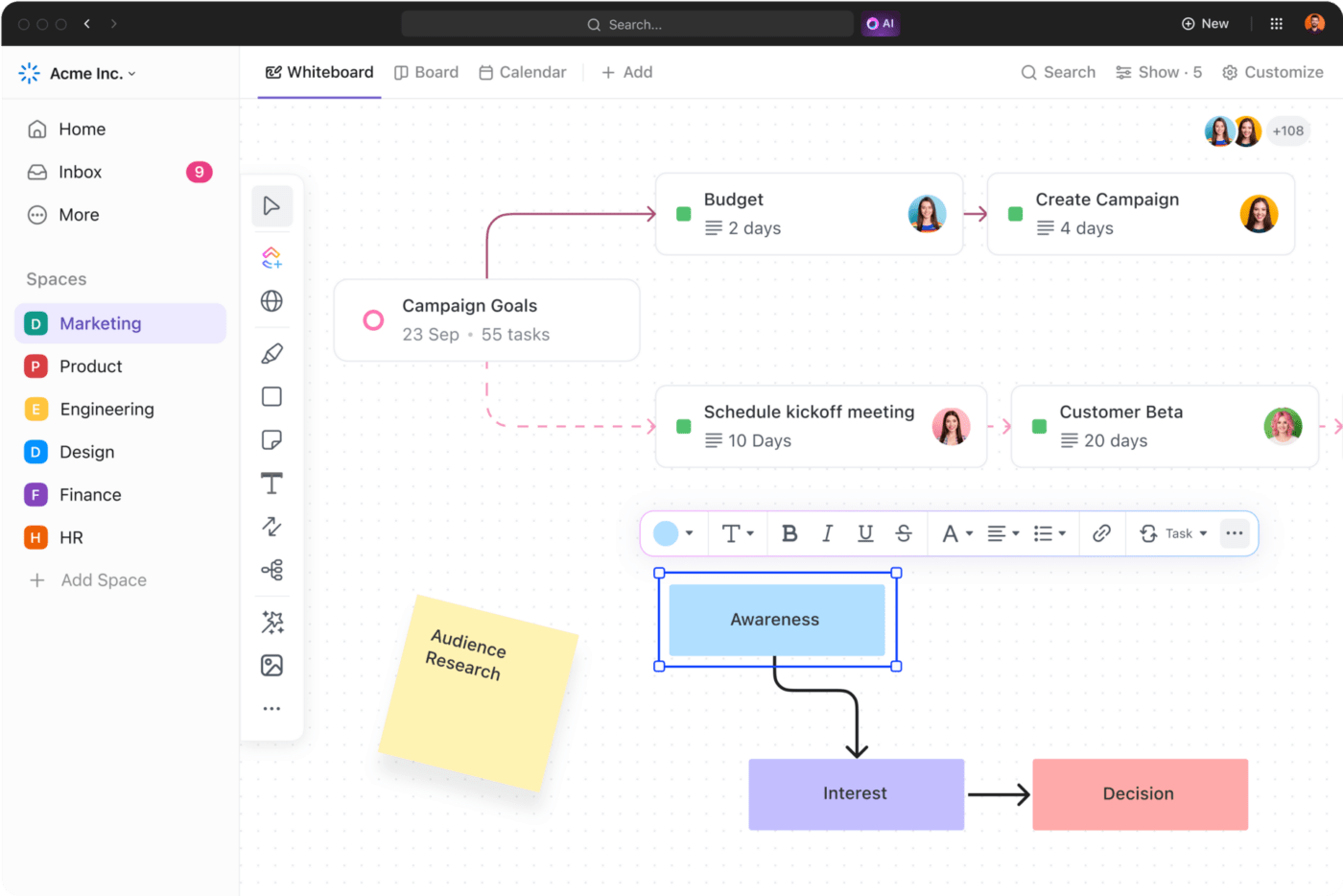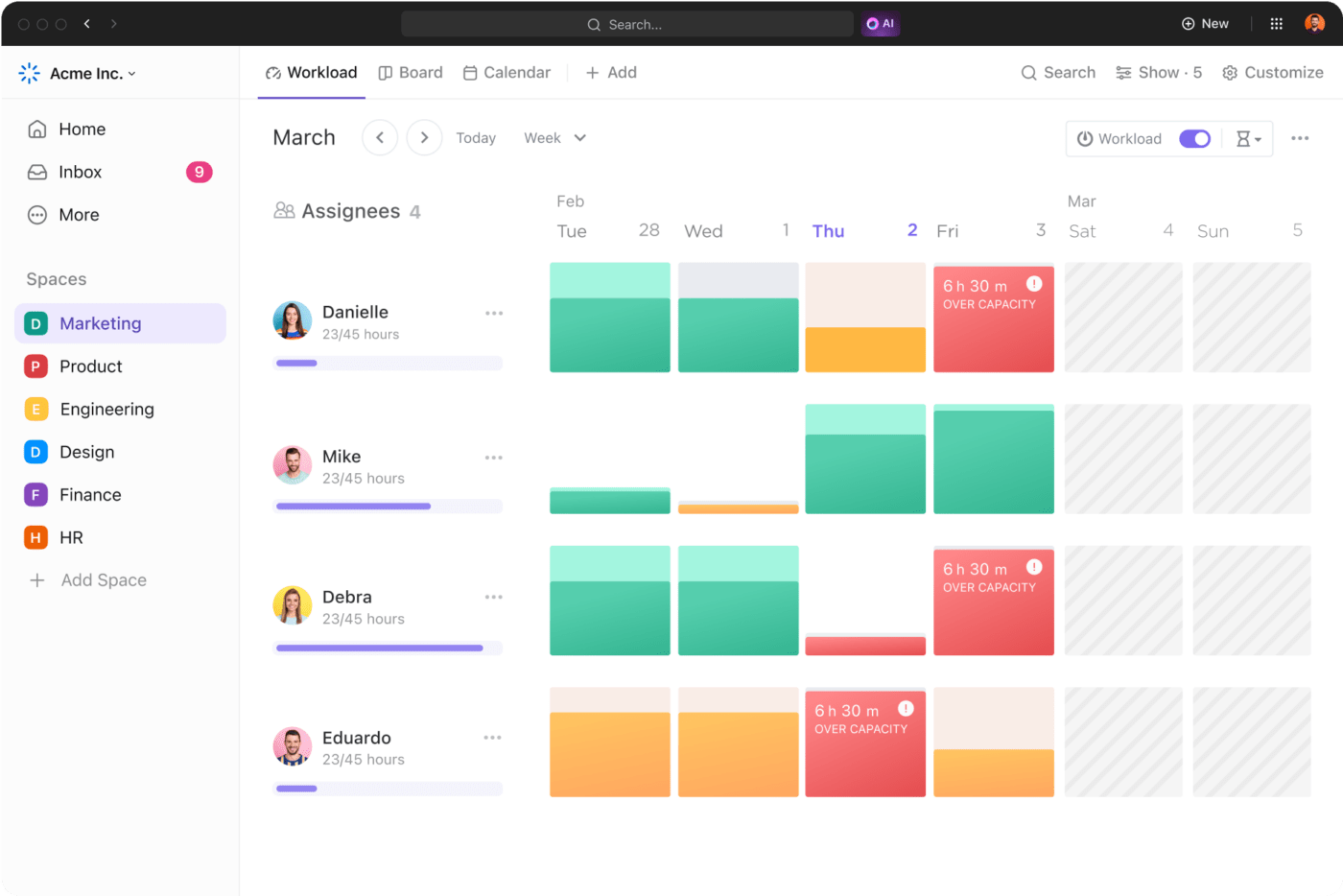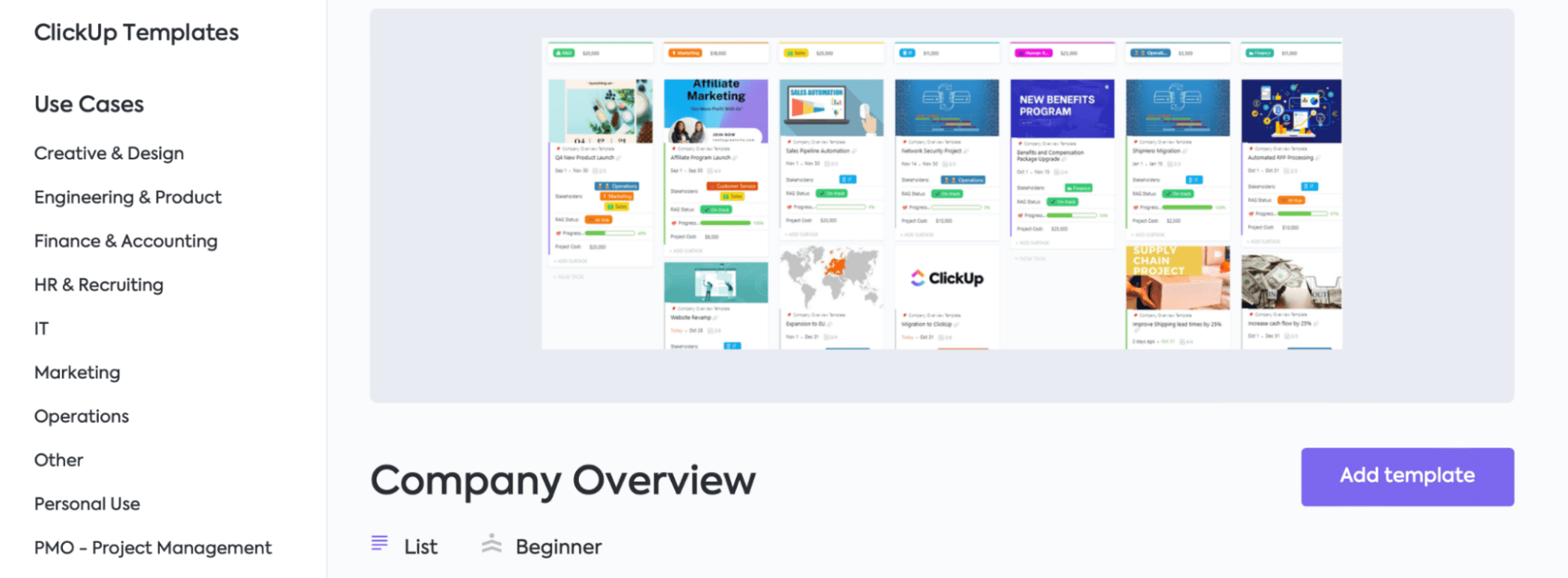

In our multi-tasking reality, communication and collaboration play a central role in successfully managing a blend of team, individual, and cross-functional projects.
However, when you are working on many projects at once, multiple communication channels and tools lead to information overload, scattered messages, inefficient workflows, and silos.
And what brings this chaos to order? Two words: Centralized communication.
Funneling all communications through a single hub ensures that every message, update, and piece of feedback is easily accessible. The benefits are endless—reduced stress, productivity improvements, better decision-making, consolidated information, etc.
In this article, we’ll discuss how centralized communication can create a more streamlined and efficient business work environment.
- What is Centralized Communication?
- Benefits of Centralized Communication
- How a Centralized Communication Hub Can Revolutionize Your Business
- Centralized Communication Systems: Must-Have Features
- The Security Perks of Centralized Communication
- Centralization Vs. Decentralization in Communication
- Role of Technology in Centralized Communication
- Challenges of Centralized Communication
- Why Centralizing Your Communication is Your Next Big Move in Business
- Frequently Asked Questions (FAQ)
What is Centralized Communication?
Centralized communication consolidates all communication channels and tools within a single platform or system. It streamlines how information flows within an organization. This unified approach ensures that messages, updates, and decisions are disseminated efficiently across all channels and teams.
For example, using ClickUp Project Management software as a centralized communication hub allows team members to access relevant information, collaborate seamlessly, and communicate effectively in real time. This enhances decision-making and increases productivity by keeping everyone on the same page.
It also allows asynchronous communication, which minimizes the need to schedule meetings and phone calls.
Centralized communication significantly saves time, simplifies processes, and boosts overall efficiency, proving crucial for businesses aiming for success in a fast-paced environment.
Benefits of Centralized Communication
In the digital era, centralized communication is a cornerstone for thriving organizations. Let’s explore its benefits and how it can revolutionize how we work, collaborate, and succeed.
1. Ramp up your team’s productivity
Centralized communication turns the tide on productivity. By channeling all communications through a single hub, you ensure every team member can access the necessary information and updates instantly. This reduces the time spent searching through multiple tools and platforms, leading to quicker task completion and achieving communication goals efficiently.
2. Elevate customer and user experiences
Centralized communication doesn’t just make life easier inside the organization; it revolutionizes the customer experience, too. With all customer interactions and feedback funneling into one centralized platform, your team can respond more quickly and effectively to customer needs. This direct approach to communication ensures that customers feel heard and valued, fostering loyalty and satisfaction.
3. Tear down silos
Say goodbye to isolated departments and hello to a united work environment. Centralized communication eradicates information silos by ensuring that all departments share a common platform for their communications. This encourages a collaborative work culture where information flows freely between teams, enhancing efficiency and fostering innovation.
4. Master real-time collaboration
The dynamism of centralized communication shines in real-time collaboration. Whether it’s instant messaging or project updates, having a central hub for communication ensures that team members can collaborate and make decisions instantaneously, no matter where they are.
5. Boost decision-making and governance
Centralized communication transforms decision-making and governance within organizations. By consolidating communication channels, decision-makers can quickly gather relevant information, making informed decisions faster. This streamlined approach also improves governance by providing a clear record of communications and decisions, which is crucial for compliance and transparency.
How a Centralized Communication Hub Can Revolutionize Your Business
The necessity for a centralized communication hub in your organization is undeniable. A study by IDC and McKinsey highlights this need, stating effective communication can amplify productivity by 20 to 25%.

Research shows that 60% of employees feel improved communication would heighten their engagement with work.
A centralized communication system is the cornerstone of this enhancement, consolidating all communication channels, tools, and processes into a single platform. This ensures everyone remains on the same page, significantly streamlining processes and boosting productivity.
Implement a centralized communication hub to eliminate the confusion stemming from multiple tools and channels. With instant messaging, project updates, and relevant information centralized, teams can more effectively focus on their tasks rather than sifting through a sea of data.
Choosing the right communication hub equipped with a user-friendly interface and advanced integration capabilities empowers your teams and simplifies processes for successful projects.
Centralized Communication Systems: Must-Have Features
- User-friendly interface for seamless adoption across all departments
- Robust security measures, including data encryption and compliance standards
- Integration capabilities with existing tools and software for a unified workflow
- Real-time messaging and collaboration features to keep teams aligned
- Comprehensive analytics and reporting tools for informed decision-making
- Scalability to grow with your organization’s needs
- Customizable notification settings to ensure important updates are never missed
- Support for remote work with reliable access from any location or device
The Security Perks of Centralized Communication
In an era where data breaches are a constant threat, the security features of your centralized communication platform are crucial. Look at the security benefits that centralized communication brings:
- Centralized communication networks bolster security against constant data breach threats
- Enhanced security features, including end-to-end encryption, protect sensitive data from unauthorized access
- Compliance with industry standards confirms legal requirements are met, enhancing organizational integrity
- These security measures build trust among employees, customers, and partners by showcasing the company’s commitment to privacy and security
Centralization Vs. Decentralization in Communication
Centralized communication channels all information through a single hub, streamlining processes and improving efficiency. It ensures everyone is on the same page, facilitating easy collaboration.
Conversely, decentralized communication networks spread information across various platforms, allowing more autonomy but potentially leading to information silos, inconsistencies, and the risk of data breaches.
Pros and cons of centralization in communication
| Pros | Cons |
| Streamlines communication, reducing unnecessary meetings | Leads to bottlenecks in the information flow |
| Upgrades security with centralized data management | Reduces flexibility in communication processes |
| Facilitates collaboration among team members | Slows down decision-making in large organizations |
| Ensures consistent and effective communication | Risks over-dependence on a single platform |
| Aids in compliance and easier management of communication standards | Less autonomy for departments or remote teams |
How to choose between centralized and decentralized communication?
Deciding between centralized and decentralized communication demands a strategic approach. Here are some steps you can take to arrive at the best decision for your company:
- Assess your organization’s size, structure, and needs
- Analyze the geographical dispersion of your teams
- Determine the flexibility required by your teams
- Evaluate the nature of your projects for integration and coordination needs
- Consider security requirements and compliance obligations
- Prioritize user adoption and ease of use
- Examine scalability and integration capabilities with existing tools
- Balance these factors to guide your communication strategy choice
Centralized communication is best for:
- Remote or geographically dispersed teams
- Teams that need a high degree of coordination and collaboration
- Teams where work requires frequent communication with multiple departments
- Teams with high compliance, security, and data protection requirements
- Teams whose work involves highly accurate data and information sharing
Role of Technology in Centralized Communication
Technology plays a pivotal role in centralized communication, be it internal communication software, workplace communication tools, or other business tools. It’s critical to have a crystal-clear understanding of your organization’s specific needs before diving into any technology investment.
So, what should you include in your communication technology to guarantee true centralization and avoid future hurdles? Look for:
- Collaboration tools: Tools like ClickUp, Slack, and Zoom consolidate messages, video calls, and project management under one roof. ClickUp transforms the digital workspace into a dynamic environment where team members can share files, update project statuses, and engage in real-time discussions, all within a single platform. Since ClickUp integrates with Slack, Zoom, and many other tools, you can work out of a single-screen

- AI Integration: AI enhances collaborative communication by automating routine tasks, offering insights based on data analysis, quickly writing and correcting copy for you, and facilitating smarter, more efficient interactions. ClickUp Brain exemplifies this advancement, providing teams with a neural network that connects tasks, documents, and people. It empowers teams to access instant answers and insights, work faster, and make better decisions

- Social media: Social media platforms serve as vital channels for instant messaging and public engagement, allowing businesses to communicate effectively with a broad audience. By incorporating social media into their centralized communication strategies, businesses can achieve a synergistic effect
- Intranet: The intranet stands as the internal backbone, providing employees with a centralized location for all relevant information, including company news, policy updates, and internal communications.

- Email: Despite the rise of instant messaging, email remains crucial in business communication. Integrated into a centralized communication system, email serves as a formal channel for detailed communications, ensuring that important messages are conveyed with clarity and are archived for future reference
- SMS and mobile marketing: While email remains central in business communication, SMS and mobile marketing play a significant role in centralized communication strategies. They offer direct and immediate ways to reach customers and employees, providing a platform for urgent updates or marketing campaigns
- Chatbot features: Chatbots revolutionize customer service by providing immediate, automated responses to inquiries. When integrated into a centralized communication hub, they ensure that customer interactions are managed efficiently, enhancing the customer experience while reducing the workload on human team members
Centralizing your team’s workflow with ClickUp
ClickUp revolutionizes how businesses unify all work-related communications. With ClickUp’s comprehensive features, organizations can seamlessly integrate various aspects of their operations into one cohesive platform.
ClickUp’s communication plan templates streamline the creation of comprehensive communication strategies. They enable teams to effectively outline, execute, and monitor their internal and external communication processes, ensuring everyone stays informed and aligned on objectives.
Here are some primary ClickUp features that enable centralization:
- ClickUp Chat View: Directly reach out to team members about specific tasks, ensuring focused and efficient communication. By integrating chat directly into workflows, teams can quickly resolve queries and make decisions without leaving the platform

- ClickUp Collaboration Detection: Engage with your team in real-time and get instant alerts when colleagues view, comment, or edit tasks alongside you. This enhances collaborative communication efforts by ensuring that team members are always on the same page
- ClickUp Docs: Collaborate on documents in real-time, allowing multiple team members to work simultaneously on the same document. This promotes teamwork and ensures a shared understanding of project objectives and details. Integrating document collaboration into workflows encourages transparency, knowledge-sharing, and collective problem-solving

- ClickUp Whiteboards: Leverage ClickUp Whiteboards for brainstorming, planning, and visualizing projects in a collaborative and dynamic environment. This interactive space enables teams to freely map out ideas, plan project trajectories, and visually communicate concepts

- ClickUp Dashboards: Centralize key metrics and project statuses with ClickUp Dashboards. By providing a unified view of project progress, deadlines, and performance metrics, this feature ensures that every team member has access to the same information

- ClickUp Views: Organize and visualize project deadlines, meetings, and milestones with ClickUp’s Calendar View. This centralized calendar enhances time management and ensures that all team members know about upcoming deadlines and events. With a shared view of project timelines, teams can better coordinate their efforts, avoid scheduling conflicts, and stay on track to meet project goals. Use ClickUp Workload View to visualize every team member’s workload and identify potential overallocation

- ClickUp Templates: ClickUp offers a large collection of 1000+ customizable templates that can be used by teams across various departments to get started with projects quickly.
The ClickUp Company Overview Template can be used to create a central knowledge hub about the company. It creates a consistent, unified messaging about the company and ensures all employees know about initiatives and projects across the organization.
Challenges of Centralized Communication
Identifying potential data security and privacy challenges is paramount in centralized communication, where all data converges into a single platform. Consolidating information heightens the risk of data breaches and privacy infringements, making the system a lucrative target for cyber-attacks.
Ensuring robust security measures and privacy protocols is crucial to protecting sensitive information and maintaining user trust. Let’s look at some common challenges and how to resolve them:
Challenge #1: You’re at risk of data breaches
Data breaches in a centralized system can expose sensitive information, causing significant damage. For example, a single vulnerability in the system could allow hackers to access all company communications.
Solution:
- Implement end-to-end encryption to secure messages
- Conduct regular security audits and vulnerability assessments
- Train employees on cybersecurity best practices
- Adopt multi-factor authentication for system access
Challenge #2: Your privacy is on the line
With centralized communication, there’s a thin line between monitoring for productivity and invading privacy. This scrutiny, aimed at optimizing performance, risks encroaching upon individual privacy.
Solution:
- Establish clear policies on data monitoring and privacy
- Use anonymized data for performance analytics
- Ensure employees have access to privacy settings in their communication tools
- Regularly review and update privacy policies to comply with new regulations
Challenge #3: The compliance complexity multiplies with centralization
Centralized communication systems can make adhering to various data protection laws and regulations more complex.
Solution:
- Map data flows to understand where and how data is stored and processed
- Implement controls to manage access to sensitive information
- Stay updated on global and local data protection regulations
- Work with legal and compliance teams to ensure the system meets all legal requirements
Why Centralizing Your Communication is Your Next Big Move in Business
The shift toward centralized communication within your business isn’t just a step forward; it’s a leap toward operational excellence. The key takeaway for business owners and decision-makers is the undeniable value such a system brings to the table—better productivity, simplified workflows, and a unified team, all contributing to a more engaged and efficient work environment.
Now, the path forward involves:
- Evaluating your current communication practices
- Identifying areas for improvement
- Embracing tools like ClickUp that transform your organization’s approach to communication
By adopting a centralized communication system, you’re not just changing how your team communicates; you’re setting them up for success in a dynamic environment.
Act now to build a more connected and cohesive future for your business— Sign up today!
Frequently Asked Questions (FAQ)
1. What is an example of a centralized communication network?
An example of a centralized communication network is a company using project management software like ClickUp as its central communication hub. This channels all communication—emails, instant messaging, project updates—through a single platform, ensuring that information is easily accessible and shared among team members. This approach streamlines processes, bolsters security, and promotes seamless collaboration, allowing for efficient organizational communication and decision-making.
2. What is an example of centralization?
Centralization in an organization might be exemplified by the adoption of a centralized communication system where all departments use a unified platform for all their communication needs. Instead of each department using different communication tools, a single platform serves as the communication hub for exchanging information, coordinating tasks, and making informed decisions. This strategy simplifies communication channels, reduces unnecessary meetings and phone calls, and ensures that all team members are on the same page, significantly boosting overall efficiency.
3. What is communication in a centralized structure?
Communication in a centralized structure involves funneling all organizational communication through a centralized communication hub, ensuring that every message, update, and piece of feedback is directed and stored in a single location. This method enables team members to communicate effectively, access relevant information promptly, and easily collaborate on projects.
Centralized communication fosters a culture of collaboration and efficiency, underpinned by enhanced security and simpler processes, pivotal for successful project management and increased productivity in the modern workplace.




